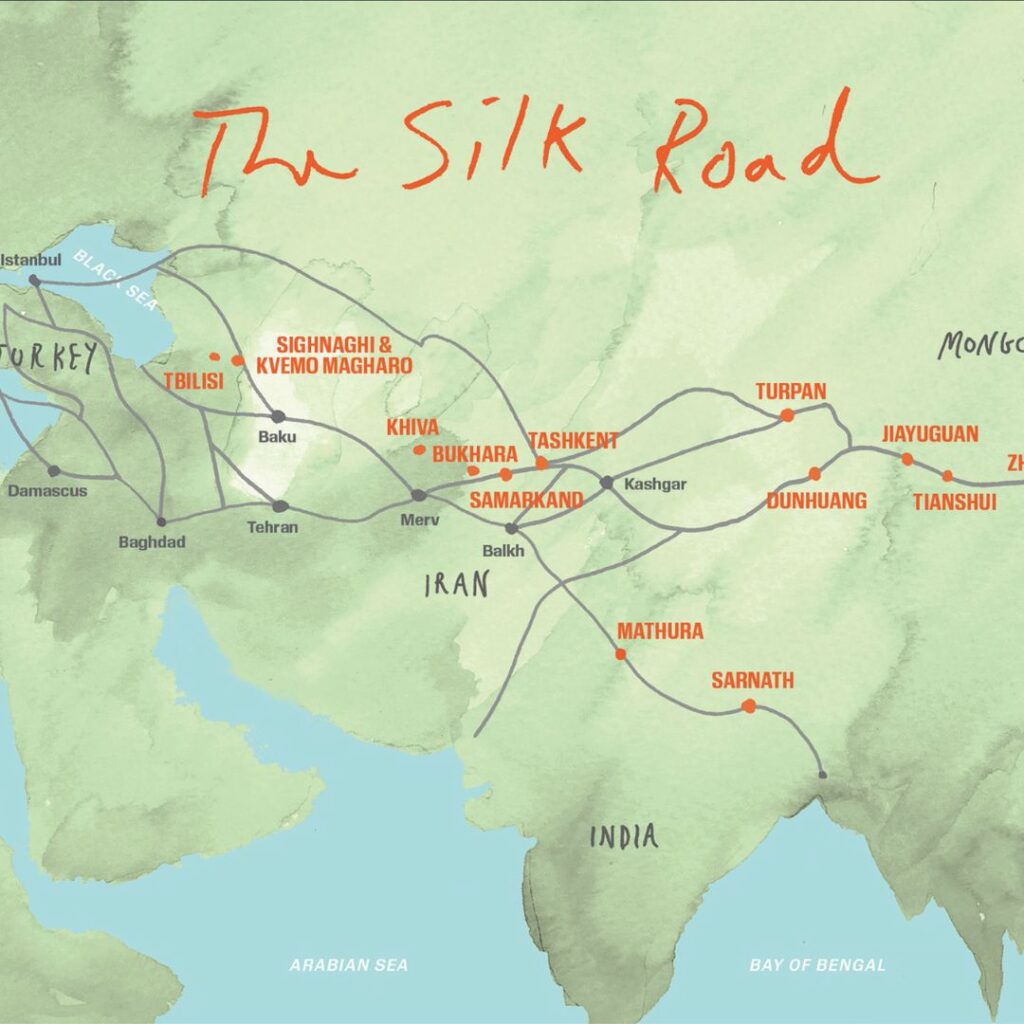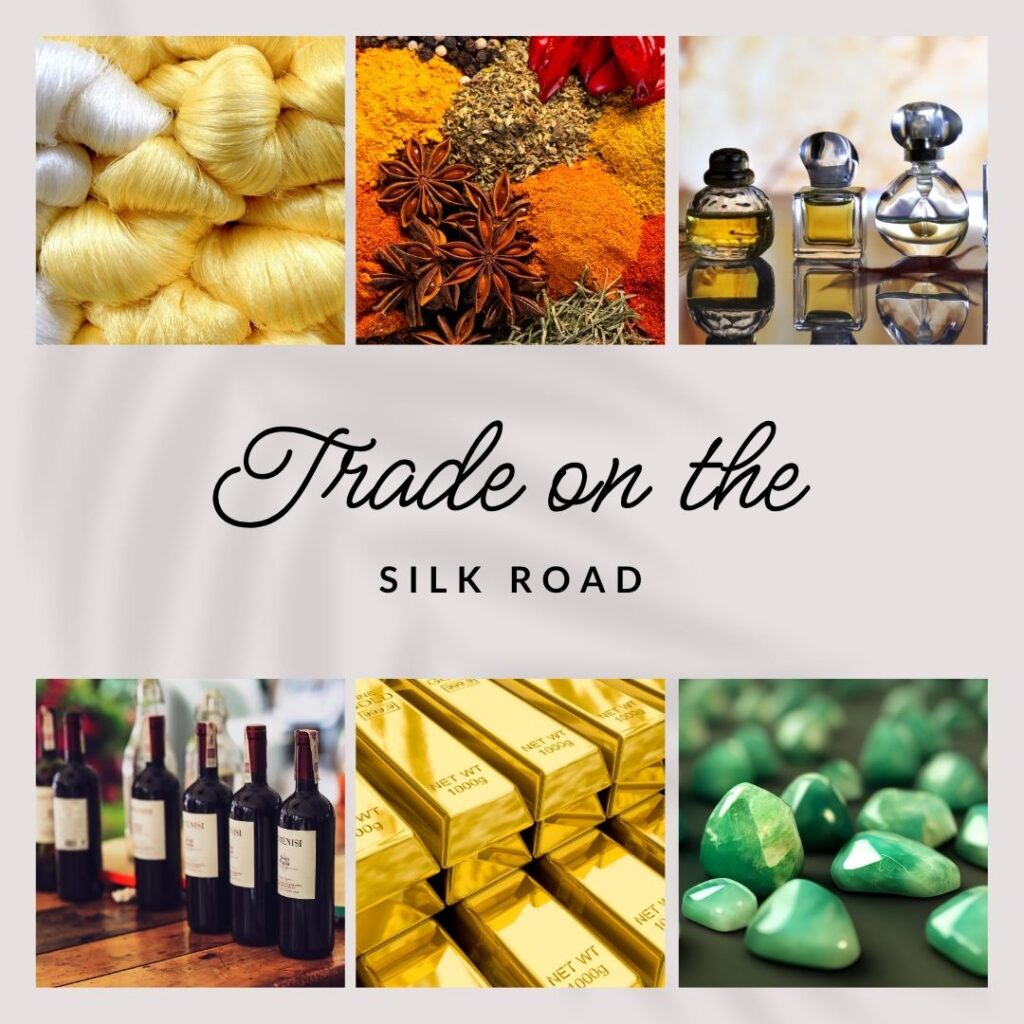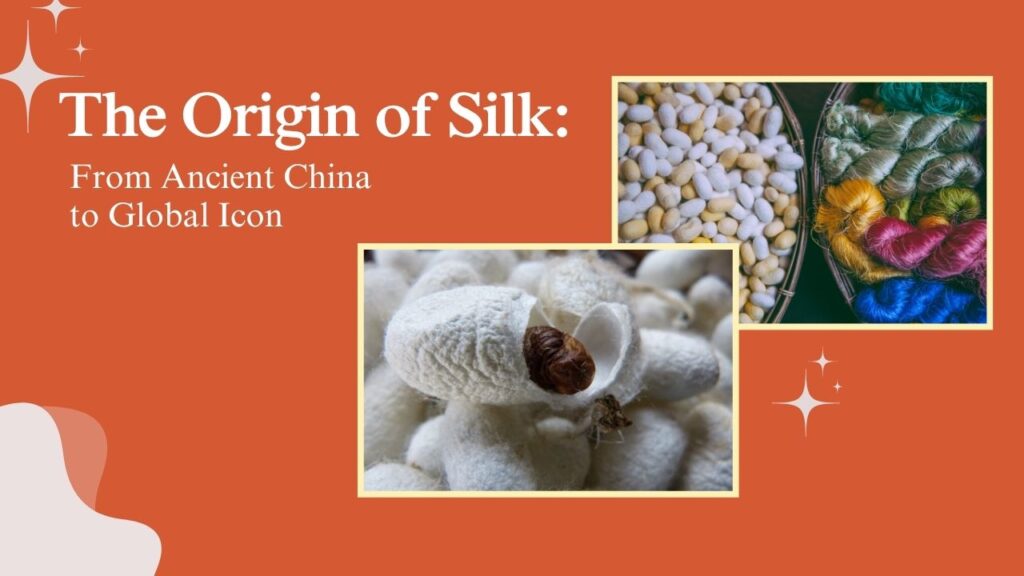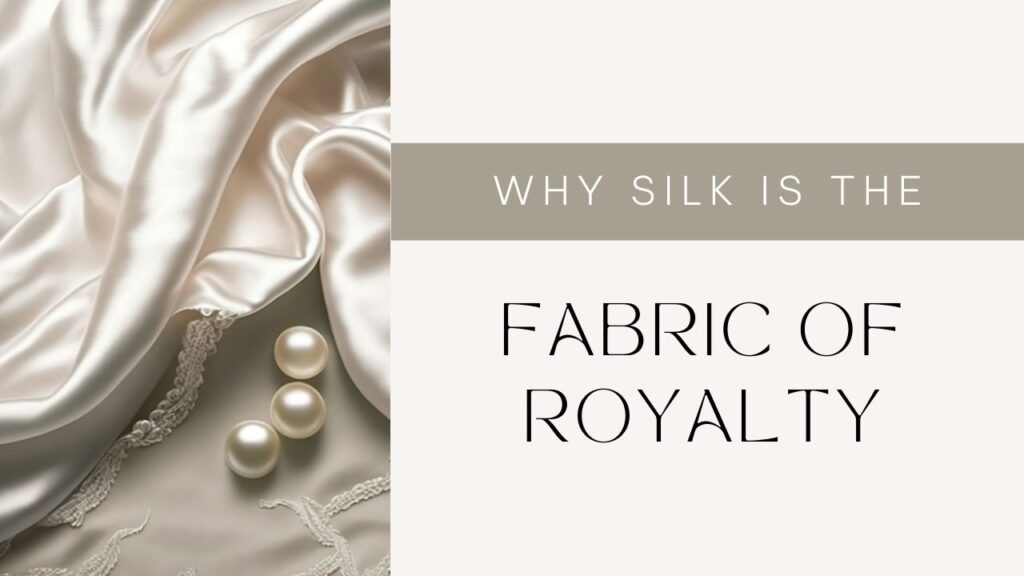Imagine a time when there were no smartphones, no planes, and no instant messages, yet people from different corners of the world still found ways to connect.
Thousands of years ago, traders, travellers, scholars, and explorers crossed deserts, mountains, and seas to exchange more than just goods. They shared stories, traditions, beliefs, and discoveries.
This is the story of the Silk Road. It wasn’t a single road, but a vast network of trade routes that linked Asia, the Middle East, and Europe. Named after one of its most treasured exports, silk from China, the route carried everything from Indian spices and Roman gold to art, ideas, and philosophies.
While the Silk Road is no longer the bustling highway it once was, its legacy still lives on in the cultural and economic exchanges that shape our world today. Let’s take a journey back in time and explore how this remarkable route connected people and transformed civilisations.
Origins and Geography of the Silk Road
The Silk Road was not a straightforward path; it was rather a huge spider web with a length of more than 6,000 kilometers. It was initially developed during the Han Dynasty of China, back in the 2nd century BCE.
Merchants departed Chang’an (now Xi’an) and passed through the eastern cities of Dunhuang and Lanzhou and made their way across the trading hotbeds of Central Asia, of Samarkand, Bukhara, and Merv.
This trip progressed to Persia (modern Iran), Mesopotamia (modern Iraq), and the Levant (modern Syria and Lebanon), and ultimately reached large Roman cities such as Antioch and Constantinople (modern Istanbul). The caravans were loaded with products, and adventures traversed over mountains, deserts, and vast plains, and overcame one of the most challenging paths in the ancient world.

What Was Traded on the Silk Road?
The Silk Road was not merely a normal route! Ancient trade lived off its heartbeat. For more than 1,500 years, it kept the East and West in touch, transporting not only silk but a cornucopia of treasures and ideas.
This is a glimpse of who traded what:
- China: silk, porcelain, jade, tea, gunpowder, and paper
- India: gems, spices, cotton cloth, herbs
- The Middle East: rugs, glass, perfumes, dates
- Central Asia: horses, wool, animal skin
- Europe/Rome: wine, fine glassware, gold, silver, olive oil
- Africa: ivory, exotic animals, gold
However, the Silk Road was not all about buying and selling. Along these routes, papermaking, new languages and scripts, art, and even medical knowledge spread out of China. Think of the way the world had its initial information highway.
It was through this continuous encounter that ancient societies learned about new foods, clothes styles, and new cultural influences. Roman women adored the touch of Chinese silk; Indian spices reached the kitchens of Persia; Arabian horses gained appreciation in Central Asia.

Cultural Exchange and Its Influence
You would find yourself in a veritable melting pot if you got off the caravan somewhere like Samarkand or Kashgar. Music, accents, clothing, and cuisine from all over the known world were all over these cities. As traders, monks, and adventurers interacted, they shared ideas and tales in addition to trade goods.
To stay up, entire communities developed multilingualism; Islamic intellectuals translated Greek literature into Arabic, while Chinese academics studied Indian science and medicine. Indian, Persian, and Arab flavours abound in tales like “The Thousand and One Nights.” Even architecture joined in, combining elaborate carvings, arches, and domes from various cultures.
Religions also hitched a ride. Buddhism, Islam, Christianity, and Zoroastrianism all spread far and wide along these routes, changing lives and beliefs as they went.
Conquest and the Struggle for Control
It is no wonder that the Silk Road turned into a battlefield where the winner had the chance to dominate the trade route. Chinese rulers, the Roman Empire, and Persian kings were eager to have a share of this profitable trade. Next in line were the Mongols! They built an empire under Genghis Khan that covered most of Asia, and guaranteed the safety of the Silk Road and traveling safety like never before in centuries. This boost led to the flourishing of exchange yet again, be it in trade or culture.
The Decline and Lasting Legacy
Towards the end of the 1400s, times were changing. Merchants began to be attracted to safer and quicker sea routes. In the meantime, the longevity of shipping was dangerous because of political turmoil and the collapse of great empires. Nevertheless, it was already established that there is a legacy of the Silk Road, an era of globalization, multicultural societies, and the entire notion of international trade.
Conclusion
The Silk Road altered the path of history in a number of ways. It sparked the first truly global trade and connected far-flung continents, allowing cultures to blend. Even though we trade now via ships and apps, the fundamental principle of connecting, educating, and constructing bridges is still crucial. The Silk Road serves as a reminder that openness and sharing, not isolation, are the keys to advancement and connection.
Frequently Asked Questions (FAQs)
1. What was the Silk Road?
It was a network of trade routes that connected Asia, the Middle East, and Europe, and was active from around the 2nd century BCE to the 15th century CE.
2. Why is it called the “Silk” Road?
Chinese silk was in huge demand and quickly became one of the most prized goods traded along the route.
3. Who traveled on these routes?
Everyone from merchants, traders, and explorers to pilgrims, soldiers, and diplomats from China, India, Persia, Arabia, and Europe used the Silk Road.
4. Which religions traveled the Silk Road?
Buddhism, Islam, Christianity, Zoroastrianism, and early Hinduism all spread along these networks.
5. Was it really just one road?
Not at all! The Silk Road was a network of numerous interconnected routes, including some that spanned the sea.
6. What was the Mongols’ role?
The Mongols, especially under Genghis Khan, played a crucial role in reviving and securing the Silk Road in the 13th and 14th centuries, thereby making it safer for trade and cultural exchange.
7. Why did the Silk Road eventually fade away?
It declined because of faster sea routes, political instability, and the fall of powerful empires that had kept the road safe.
8. Does the Silk Road still matter today?
Absolutely! Its spirit lives on in global trade, cultural diversity, and international cooperation. Big projects, such as China’s Belt and Road Initiative, are modern echoes of the ancient Silk Road’s legacy.



